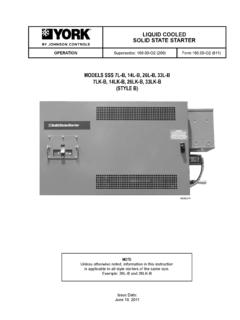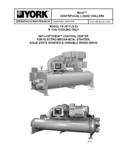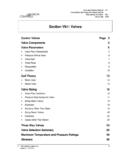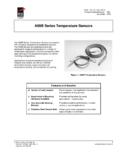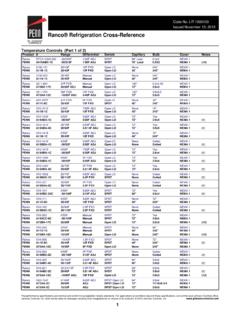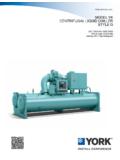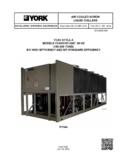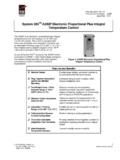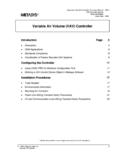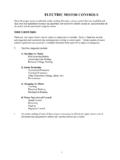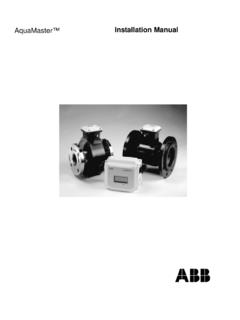Transcription of G670 Intermittent Pilot Ignition Controls Technical …
1 Installation Sheets Manual 121. Gas Combustion Combination Controls and Systems Section G. Technical Bulletin g670 . Issue Date 0300. g670 Intermittent Pilot Ignition Controls Figure 1: g670 Intermittent Pilot Ignition control Description The g670 is a Non-100% Lockout Intermittent Pilot Ignition (IPI) control that replaces the G67AG and G67BG Ignition Controls . The g670 is used to automatically light a Pilot burner and energize the main burner gas valve in response to a call for heat from the system thermostat. When the call for heat is satisfied, the thermostat opens and the g670 de-energizes the Pilot and main burner gas valves. Application Following are the application requirements of the g670 control . Requirements The g670 can be used with equipment with a maximum firing rate of 117 kW (400,000 Btu/hr).
2 Any application greater than 117 kW. (400,000 Btu/hr) must have written approval in advance from the Heating Products Engineering Department. All g670 applications must use a redundant gas valve system with the main valve seats in series. 2000 Johnson Controls , Inc. 1. Part No. 24-8143-162, Rev. B Code No. LIT-121240. Table 1: Specifications Ignition Type Indirect Ignition Source High voltage spark, capacitive discharge High Voltage Cable 915 mm (36 in.) maximum Length Flame Detection Means Flame rectification Flame Detection Types Remote sensing Minimum Flame Current microampere Flame Failure Response second, maximum Time Spark Gap mm ( in.) nominal Ignition Trial Time Infinite Power Requirements control : 24 VAC, 50/60 Hz, nominal Operation Current: nominal + valves Contact Rating Main Valve: 2A continuous, 5A inrush Pilot Valve: 2A continuous, 5A inrush Ambient Operating and -40 to 66 C (-40 to 150 F).
3 Storage Temperature Humidity 95% RH non-condensing Types of Gas Natural (Liquefied Petroleum [LP], manufactured, mixed, or LP gas-air mixture may be used in a well vented or outdoor application.). Agency Listing CSA (AGA/CGA) Certificate Number 112520-0-19. Specification Standards ANSI Standard CSA 199. The performance specifications are nominal and conform to acceptable industry standards. For application at conditions beyond these specifications, consult the local Johnson Controls office. Johnson Controls , Inc. shall not be liable for damages resulting from misapplication or misuse of its products. Operating The following definitions describe operating conditions. Mode Trial for Ignition --Period during which the Pilot valve and spark are Definitions activated attempting to ignite gas at the main burner.
4 The trial-for- Ignition period is infinite for the G670s and ends once the Pilot flame is detected or the call for heat ends. Run--The main valve remains energized and the spark is turned off after successful Ignition . Flameout--Loss of proven flame. Should a flameout occur, the main valve closes and the spark recurs within second. 2 g670 Intermittent Pilot Ignition Controls Technical Bulletin G . Sequence of Figure 2 illustrates the sequence of operation for the g670 Ignition control . Operation On a call for heat from the system thermostat, the g670 simultaneously opens the Pilot valve and supplies a continuous spark to the Pilot burner's electrode. When the Pilot burner gas ignites, the Pilot flame sensor detects the Pilot flame and signals the g670 to energize the main gas valve and discontinue the spark.
5 The main gas valve will not be energized until the flame sensor detects the presence of the Pilot flame. If the Pilot flame goes out (with the thermostat still calling for heat), the g670 will de-energize the main gas valve and provide a continuous spark at the Pilot burner's electrode. When the Pilot flame is re-ignited and detected by the Pilot flame sensor, the main gas valve is energized and the spark is shut off. The g670 de-energizes the Pilot gas valve and main burner gas valve when the thermostat stops calling for heat. Thermostat Start Call for Heat Flame Yes Present? No Trial for Ignition Pilot Flame Sensed? No Yes Energize Main Valve Run Yes De-energize Flameout? Main Valve No Yes Thermostat Calling for Heat? No De-energize control Pilot and Main Valves End Figure 2: Sequence of Operation g670 Intermittent Pilot Ignition Controls Technical Bulletin G 3.
6 Installation IMPORTANT: These instructions are intended as a guide for qualified personnel installing or servicing Johnson Controls Ignition Controls . Carefully follow all instructions in this bulletin and all instructions on the appliance. Limit repairs, adjustments, and servicing to the operations listed in this bulletin or on the appliance. ! WARNING: Fire or Explosion Hazard. Avoid serious injury by carefully following precautions in this bulletin and all instructions on the appliance. Limit repairs, adjustments, and servicing to the operations listed in this bulletin or on the appliance. ! WARNING: Fire or Explosion Hazard. If the control is installed in an area that is exposed to water (dripping, spraying, rain, etc.), it must be protected. If the control has been exposed to water in any way, do not use it.
7 ! WARNING: Shock Hazard. Avoid electrical shock and equipment damage. Disconnect electrical power and turn off the gas before wiring the control . ! CAUTION: Equipment Damage Hazard. Label all wires prior to disconnection when servicing Controls . Wiring errors can cause improper and dangerous operation. Verify proper operation after servicing. Mounting Perform the following procedure to install the g670 Ignition control . 1. Shut off power to the appliance. 2. Turn off gas at the manual shutoff valve adjacent to the appliance. 3. Label each wire with the correct terminal designation prior to disconnection. 4. Disconnect the power supply (transformer) and the thermostat lead wire at the Ignition control . 5. Disconnect the sensing probe lead from Terminal 4 on the Ignition control . 6. Disconnect the high voltage cable from the spark transformer.
8 7. Disconnect the Pilot Valve 1 and Main Valve 3 leads from the Ignition control . 8. Disconnect any wires connected to the ground terminals on the Ignition control . 4 g670 Intermittent Pilot Ignition Controls Technical Bulletin G . 9. Remove the screws holding the Ignition control assembly in place. 10. Remove the Ignition control and discard. 11. Using the same holes as the old Ignition , mount the new g670 control on a grounded metal surface with metal screws or bolts through the mounting holes provided on the enclosure. Modifying All spark Ignition Controls have a spark transformer connected to a high Existing Ignition voltage cable. There are three types of connection for the high voltage Cable cable: Spike, Rajah, and mm (1/4 in.) male spade (see Figure 3). The g670 has a Spike transformer. When replacing a control that has a Rajah or male spade connection, the crimp-on connector must be cut off.
9 1. Slide the rubber boot up the cable. 2. Cut the lead just above the connector (see Figure 4). Make a straight cut perpendicular to the cable. 3. Center the exposed wire on the end of the lead over the spike in the spark transformer and push the wire lead down firmly over the spike (see Figure 5). 4. Ensure the lead is inserted all the way into the spark transformer. Slide the boot back down the cable and over the spark transformer. Spike Connection Rajah Connection mm (1/4 in.). Male Spade Figure 3: High Voltage Cable Connectors Insulating Boot Crimp-on High Voltage Cable Connector Cut off connector here. Figure 4: High Voltage Cable with Crimp-On Connector High Voltage Cable Spike must be in contact with the center wires. Figure 5: Spark Transformer Connection g670 Intermittent Pilot Ignition Controls Technical Bulletin G 5.
10 Wiring ! CAUTION: Equipment Damage Hazard. Connect the high voltage cable to the spark transformer terminal and spark electrode ( Pilot burner assembly) before applying power to the control . Ensure the ground wire is attached to the Pilot burner and control ground terminal strip. ! CAUTION: Equipment Damage Hazard. Locate all limit and operating Controls in series with the thermostat terminal (THS 2) on the Ignition control . Check the voltage rating marked on the control and make sure it is suited to the application. Use a National Electrical Code (NEC) Class 2 transformer to provide 24 VAC under maximum load, including valves. A transformer having excessive primary impedance due to poor coupling will affect the Ignition potential. Refer to Figures 6 through 9 for wiring diagrams. All wiring should be in accordance with the NEC and all other local codes and regulations.
